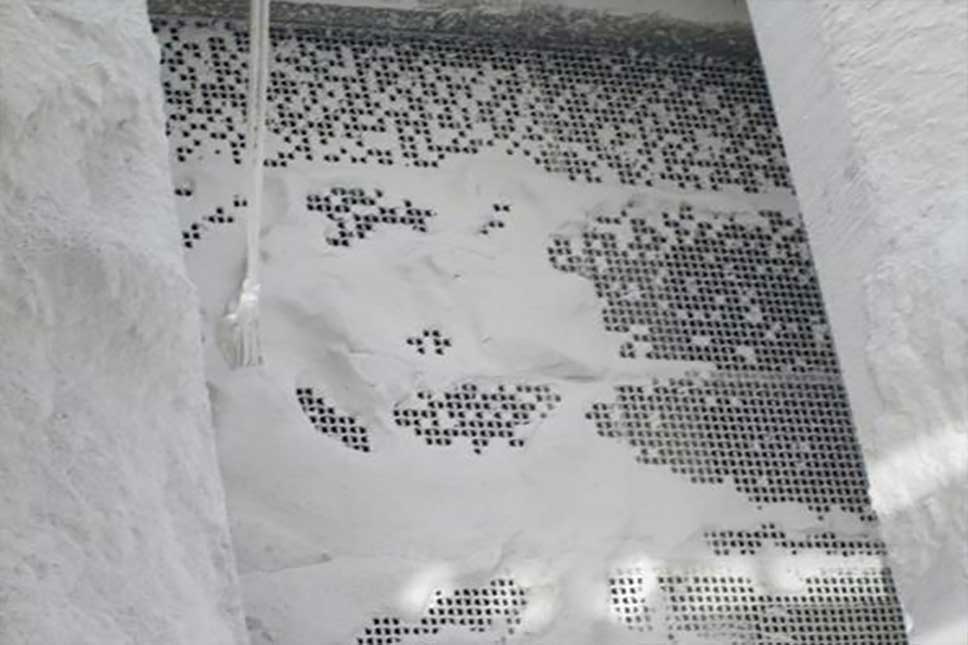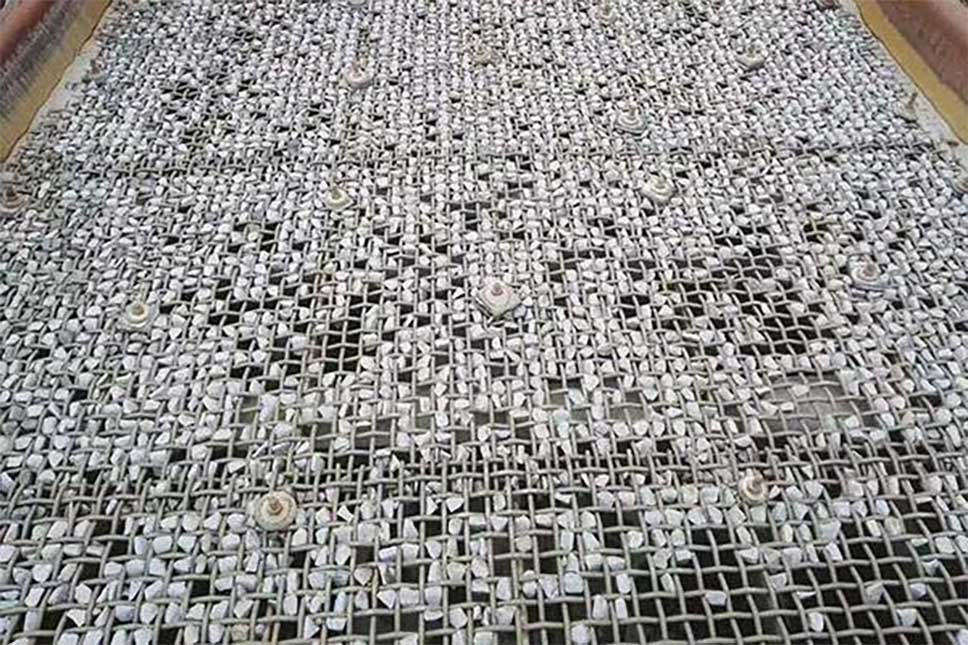What is a vibrating screen blinding?
Material plugging often occurs in the use of a mining vibrating screen. There are several reasons for screen plugging as the shape of the material varies. Plugging is the result of near-size particles becoming lodged in the openings of the screen. This creates a less open area for the material to fall through. Blinding occurs when fine particles stick to the surface media due to moisture gradually building up over the openings. When screening these types of materials, it’s not a question of if blinding will occur, but when it will occur. The problem becomes particularly acute when the screens operate in a state of partial blinding. As the various apertures become clogged, reducing the available screening area, production and efficiency go down.

We’ll share several tips to help you minimize the blinding of your vibratory screener.
Common Five Reasons for Screen Plugging
- When there is not enough energy being forced onto the screen, large particles may get stuck in the holes.
- The particle size of the crushed stone is similar to the size of the screen aperture: In the process of stone screening, such particles are stuck in the aperture and cannot pass through the screen smoothly, and cause screen plugging. This kind of plugging is also known as near-sized plugging.
- Flat particles take a large proportion in materials due to crushing or the material itself: Sometimes the shape of the particle can cause plugging. These flat particles cannot go through the screen smoothly. Besides, they also spread out and gather together, preventing other materials from screening and plugging the aperture.
- The material contains much moisture or requires washing: On one hand, the fine particles are bonded together by water when the stone material contains a large proportion of mud or the material requires washing. On the other hand, the mud blinds the screen, resulting in the materials being hard to be screened and causing blinding.
- The type of screen media are using for your application may also be a reason for plugging.

9 Solutions for Plugging and Blinding of Aggregate Screens
Plugging is much easier to fix than blinding, although many of the methods used for plugging can also be applied to blinding.
More stroke
When there is not enough energy being forced onto the screen, large particles may get stuck in the holes. If this occurs, try increasing the amount of energy that is being put into the screen. By increasing the amount of energy, you increase the stroke, which provides the force needed to lift the particles out of the screen holes. Note: Increasing the stroke can create added stress to the screen, thus shortening its life. Be sure that increasing the stroke is a positive economic decision because you may have to replace the screens more frequently.
Change the shape of the holes
Sometimes the shape of the particle can cause plugging. If you notice that particles of a particular shape always get stuck in the screen openings, consider changing the shape of the holes in your screen. For example, if particles keep getting stuck in square openings, it may be beneficial to switch to a screen with octagonal holes to reduce plugging and pop-out materials in the plugged holes easier.
Different surface media
The type of screen media you are using for your application may also be a reason for plugging, can change the aperture structure of the mining screen to prevent plugging and blinding. Consider switching to a rubber or polyurethane screen if plugging occurs in your woven wire screen or vice versa. Rubber panels and polyurethane screens are more durable and can push out materials more effectively when energy is put into the screen.
Adjust the crusher setting
If particles continue to clog your screen, adjust the settings on your crusher as a means to reduce plugging. Note: Use this method as a last resort if no other methods work.
Increase the speed
One way that blinding can be resolved is to increase the speed of the screen. By increasing the speed, you increase the material’s acceleration and travel rate. This increase in speed can reduce blinding because it allows less time for fine material to build up on the screen. However, a disadvantage to increasing the speed is that the screen’s bearing life is decreased.
Adjust the stroke
Just as with plugging, increasing the stroke of your screen can have advantages and disadvantages. When you increase the stroke, you decrease the opportunity for blinding to occur. However, increasing stoke also increases stress on the screen. Determine if the amount of screen wear would still leave a positive economic return for your specific application.
Different surface media
It is important to look at the type of screen media being used. If blinding occurs, try using a screen that is more flexible and can move. With an increase in energy and a more flexible surface, fine particles are less likely to stick to the surface.
Use ball trays
If you do not already have a ball tray in your screening system, it may be beneficial to implement one to solve the issue of blinding. Balls placed on the deck beneath the screen media bounce against the screen to help prevent blinding. A ball deck is placed underneath the screen media and bounces against the screen when energy is exuded. The balls help prevent fine material from sticking to the surface and allow it to fall down the screen.
Heated screen decks
Because fine material typically clings to the screen surface due to moisture, using a heated screen deck may help prevent this. By heating the screen deck, moisture can essentially be burnt off. This allows the fine material to flow down the screen rather than build up on it.
Works Cited: 9 Solutions for Plugging and Blinding of Aggregate Screens